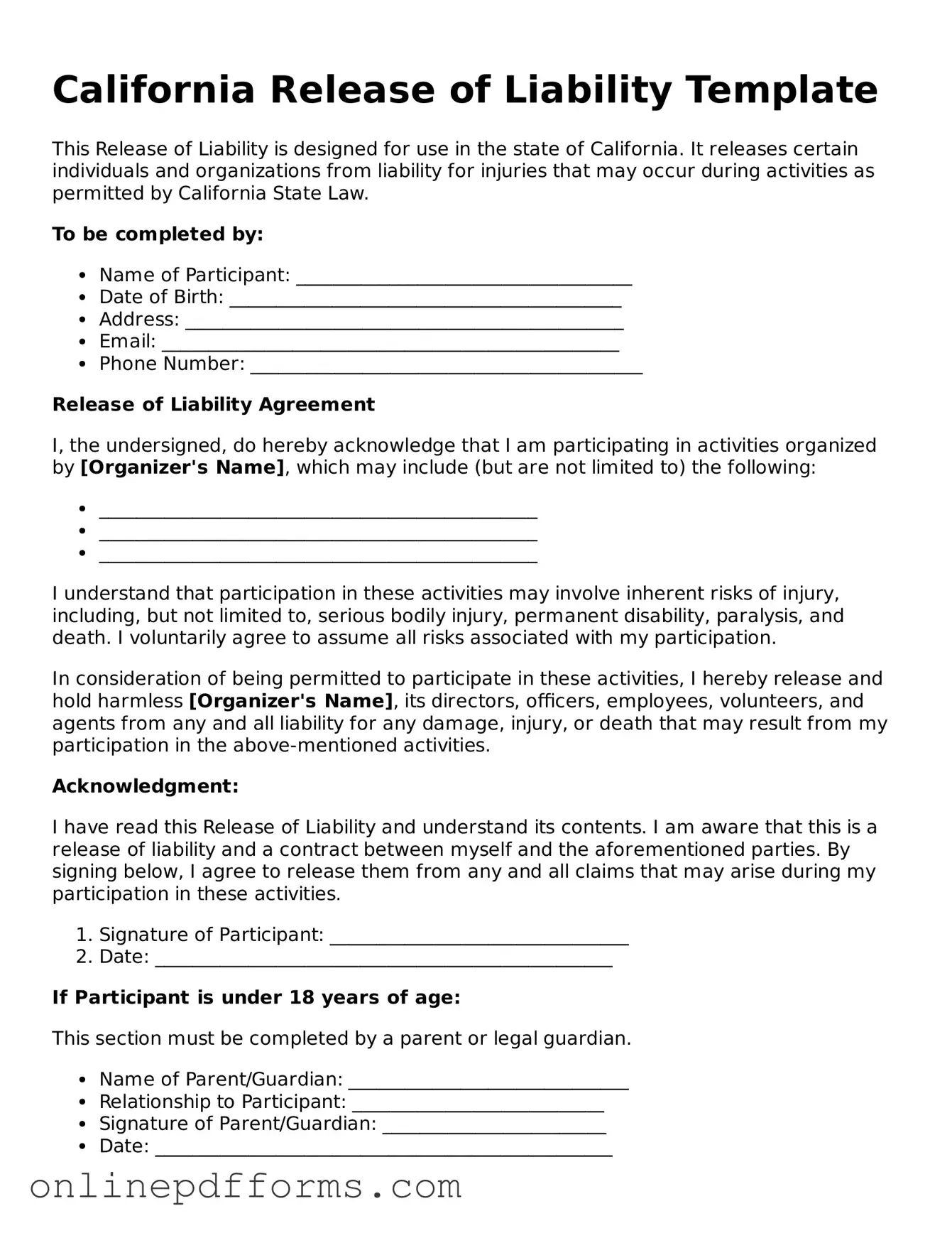The California Release of Liability form shares similarities with the Waiver of Liability form. Both documents serve to protect an organization or individual from legal claims that may arise from participation in activities or events. A Waiver of Liability typically requires the participant to acknowledge the risks involved and agree not to hold the organization accountable for any injuries or damages. This mutual understanding helps clarify responsibilities and expectations, thereby reducing the likelihood of disputes in the event of an accident.
Another document akin to the California Release of Liability is the Indemnity Agreement. This type of agreement obligates one party to compensate another for certain damages or losses. Like the Release of Liability, it aims to limit exposure to risk. However, while a Release of Liability focuses on preventing claims from participants, an Indemnity Agreement shifts the financial burden of claims from one party to another. Both documents are crucial in risk management strategies.
The Consent Form also resembles the California Release of Liability. Consent Forms are often used in medical and recreational contexts, allowing individuals to agree to specific treatments or activities. Participants must understand the inherent risks involved, similar to the acknowledgment required in a Release of Liability. Both documents emphasize informed consent, ensuring that individuals are aware of what they are agreeing to before proceeding.
The Participant Agreement is another related document. This agreement outlines the terms and conditions under which individuals may participate in an event or activity. It often includes clauses that limit liability, similar to a Release of Liability. By signing a Participant Agreement, individuals confirm their understanding of the rules and risks associated with participation, thereby protecting the organizing entity from potential legal action.
In addition, the Medical Release Form bears similarities to the California Release of Liability. This form allows healthcare providers to disclose medical information to third parties, often in conjunction with sports or physical activities. While its primary purpose is to manage health information, it may also include liability waivers that protect organizations from claims related to medical emergencies. Both documents emphasize informed consent and the acceptance of risk.
The Hold Harmless Agreement is another document that parallels the California Release of Liability. This agreement explicitly states that one party will not hold another party responsible for certain risks or liabilities. Like the Release of Liability, it aims to protect against claims resulting from negligence or accidents. Both documents are often used in contracts involving services or activities where risk is a factor.
The Rental Agreement often contains liability clauses similar to those found in a Release of Liability. When renting property or equipment, the Rental Agreement may require the renter to accept responsibility for any damages or injuries that occur during the rental period. This acceptance of risk mirrors the principles found in a Release of Liability, as both documents seek to limit the liability of the property owner or lessor.
The Event Participation Agreement is another document that aligns closely with the California Release of Liability. This agreement outlines the terms under which individuals may participate in an event, including any associated risks. Participants typically sign this document to acknowledge their understanding of the risks involved, similar to the acknowledgment required in a Release of Liability. Both documents aim to mitigate legal risks for event organizers.
Finally, the Safety Acknowledgment Form is similar in purpose to the California Release of Liability. This form requires individuals to acknowledge that they have received safety information and understand the risks associated with an activity. By signing, participants confirm their awareness and acceptance of these risks, which aligns with the intent of a Release of Liability to protect against future claims arising from accidents or injuries.
